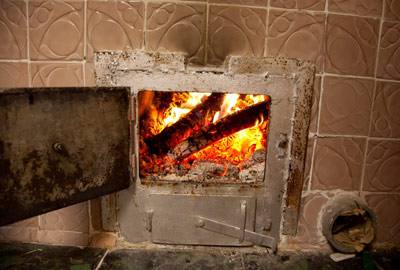
With utility costs on the rise and environmental concerns becoming more important than ever, many people are looking for sustainable alternatives to heat their homes.
It can be a bit baffling, however, as you try to sort them all out. Here is a list of some of the better-known sustainable heating systems, and a brief explanation of each.
1. Geothermal Heat Pumps
Geothermal heat pumps (GHPs) make use of the relatively steady temperature under the earth’s surface. GHP systems are largely underground in this temperature-stable area, where it’s cool in the summer (think root cellars) and warm in the winter (being below the frost line).
Sometimes called “geo exchange systems,” GHPs make use of a heat pump that removes the cold air from the home and puts it back into the ground to be re-absorbed. Then the GHP pumps warm air into the home. It does the reverse in the summer. Because the system begins with moderate-temperature air that fluctuates very little, less energy is required to heat or cool the air. GHPs can even be installed on the bed of some bodies of water.
2. Pellet and Wood Boilers and Furnaces
This concept is old-fashioned, but modern wood- or pellet-burning furnaces have come a long way. They are efficient and comfortable, and require much less maintenance than traditional wood-burning furnaces. They can be designed so that emissions are greatly reduced – some companies claim their wood-burning furnaces emit 90% fewer emissions than wood-burning fireplaces. Wood is a renewable resource, and pellets are made from waste materials. You will sometimes see these called Biomass Boilers.
3. Solar Heating Systems
There are passive and active solar heating systems for homes and businesses. Passive solar heating makes use of heat diffusion, a natural process whereby heat fills a space. Active solar heating uses the sun’s heat to warm water or air which is then used to heat the home.
Passive solar heating systems do not, strictly speaking, make use of mechanical means to distribute heat. Solar panels may be used, or sometimes a sunny window with an absorber is all that is required. Active solar heating systems collect heat either in liquid reservoirs (hydronic collectors) or air reservoirs (air collectors). Active solar systems then use some means to pump the heated air from the collector to the interior of the home. Solar heating systems can stand alone or be installed to augment electric, forced air systems.
4. Underfloor Systems
Either electric or hydronic (water-based), underfloor heating systems save energy. They involve heating coils or pipes that are installed beneath the floor of a building’s interior. These pipes or coils are heated by electricity or hot water. The heat is distributed by radiation rather than by electrical means. This radiant heat is considered healthier and certainly uses less energy.
5. Space Heaters
Space heaters are used to heat a specific area rather than a whole building or home. You can even get “electric fireplaces” which are space heaters with pictures of moving flames that make them look like fireplaces. They are portable, and come in gas-, electric-, and oil-powered varieties. You can use a space heater to augment a conventional heating system – the room where you do the most living can be heated with the space heater while vents are closed in unused rooms.

